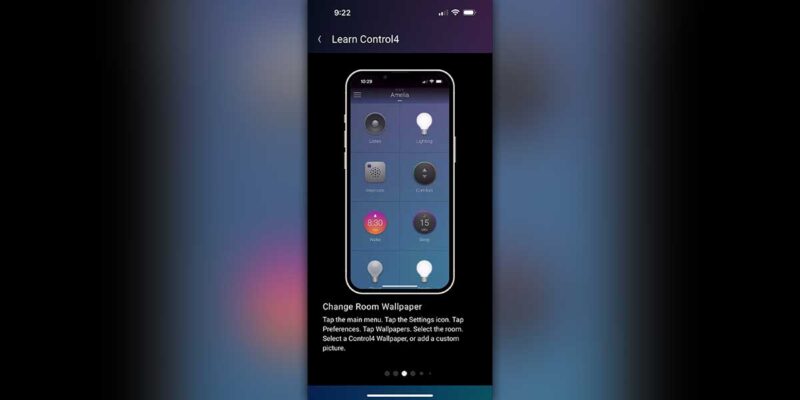DSaaS: An Opportunity in Higher Education

Every time I start to write a piece for rAVe ED, I try to think about what the broader AV industry wants to know about the education market. I always try to put forward ways that companies can partner with schools to provide value for all parties. As many people know, one area that I have struggled with in this aspect is AVaaS. As I thought more and more about this, however, I have come up with an area that would be perfect in higher education for aaS. That is DSaaS (Digital Signage as a Service).
In the higher education landscape, this is still a fairly unorganized territory. Usually, the AV department “owns” the digital signage product, and from there, things scatter all over the place. Content design and content ownership fall into all kinds of different areas. In some cases, the communications (marketing) office owns the digital signs. In other cases, the provost office or the dean of students’ office own them. In many institutions, like where I work, everyone has a little bit of ownership in them, depending on where they are installed. While we are fortunate in my case to be a small enough school to make this work, as soon as a university gets a bit larger, digital signage ownership becomes an arduous process to manage. Often, one department has a smaller budget than another, so it can not afford the expense of the equipment. Another situation is if one department has specific needs that require special equipment or a whole different management system. Who pays for the server upgrades and the switching costs, or worse yet, who maintains multiple systems to satisfy everyone?
A rather elegant solution to this is DSaaS — here is how it would work. An enlightened integration company with a quality creative division would visit a school. This company would take an inventory of everything that exists on the digital signage network, including all the players, monitors, speakers, servers and licenses. The company would prepare a contract (depending on the equipment’s age/status) that would use all the equipment, some of the equipment or none of it at all. That decision is up to the integrator, based on how they want to construct a contract to fit the customer’s needs. They would then develop a monthly cost for the entire digital signage network. This cost would include creative content. We will get back into the content a bit later, as that is the stickiest (but most valuable) part of the contract.
The integrator will need to think about getting their investment back over time. Displays today are incredibly affordable (particularly for an integrator buying wholesale), so for any digital sign up to 80 inches in size, the integrator should be able to develop a reasonably inexpensive cost per sign. So, let’s imagine a 60-inch display costs an integrator $500. The player costs another $200 and a license for that player to connect to a server may cost another $100 per year. The integrator now has to make up at most $700 in equipment and $100 in licensing per year. Finally, the integrator would need to factor in the cost of hosting a server for the client. For each integrator — depending on how they consider the time value of money, how long they are willing to take to make their money back and what service they already have in the cloud, they will come up with a monthly fee for the sign. The critical selling point here would be that the client is not buying and installing the equipment up front and then paying a fee. Instead, the price includes all equipment and installation. This per sign fee would then be the additional cost for any other sign. There could be tiers of pricing, say one price for standard signage and another rate for signage with touch interface/wayfinding. A smart integrator will have set up a system that allows for that flexibility without incurring significant cost additions. Additionally, the integrator takes on all the responsibility of the server, which includes maintenance and upgrades of the system. This would benefit the integrator who could scale a server to handle multiple clients.
Now, let’s talk about content. We all have seen digital signage on campus that falls flat. Sometimes digital signage provides very little value to students, visitors or employees of the college. Why? There’s a lack of understanding of how to make content that catches attention. This is where having a creative division makes sense. The creative division can work with the school and create templates for people who want to post to the signs. They could train the customers, both on how to use the templates and about compelling content. They would regularly provide refreshed templates and some pre-defined level of consulting on design. Developing this relationship at first is the tricky part. Like any business, each school has its own brand and style. Content would have to match that. The upfront work would be intense, and the integrator would have to decide how they would want to make that money back over time, just like they did in equipment. All of these services are figured into the monthly per sign fee.
The Information and Technology Infrastructure Library (ITIL) defines a service as “a means of delivering value to customers by facilitating outcomes customers want to achieve, but without the ownership of specific costs and risks.” DSaaS for education certainly fits that description. I think that this would also provide value to many larger K-12 districts. Our internal customers want these signs, but signs are not part of the core mission of most in-house AV or IT departments. Therefore, the winning solution for all would have to be a beneficial solution that provides DSaaS without allowing the school to take on full ownership.




